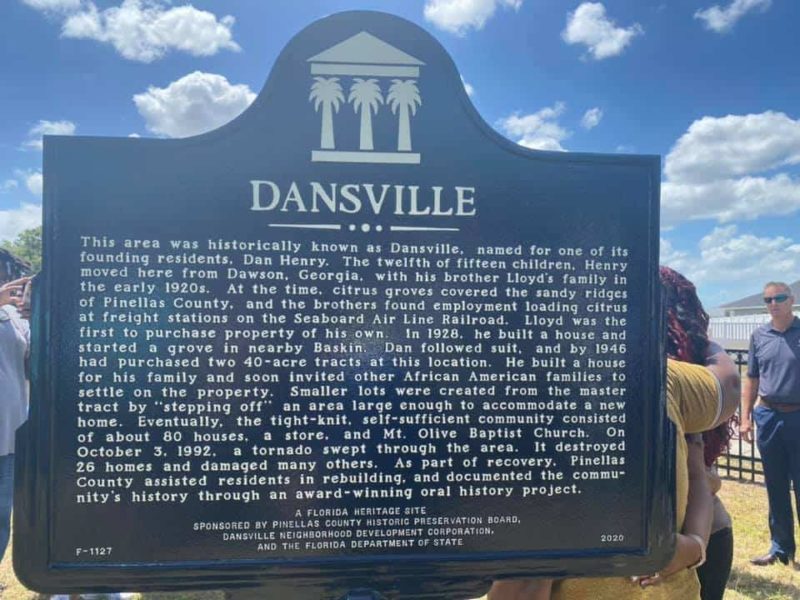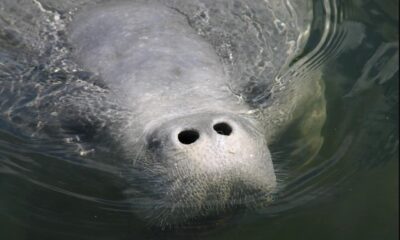Thrive
Several ‘catalytic’ projects coming to unincorporated Pinellas

With 267,944 people calling unincorporated Pinellas home, it would constitute the county’s largest municipality if it were a city – more than doubling the population of Clearwater and slightly edging out St. Petersburg.
County officials are working to increase the quality of life for those residents, and commissioners heard updates on a myriad of projects coming to areas outside of city limits during Thursday’s work session.
Brian Lowack, assistant to the county administrator and representing lower and middle Pinellas, told county commissioners the developments follow extensive conversations with community leaders and service providers to establish priority projects and goals for each area. He said American Rescue Plan Act (ARPA) funding, Penny for Pinellas dollars and community development block grants brought the plans closer to fruition.
“We’re now starting to get to the point where we can implement those projects and get the work done,” said Lowack.
Lowack began his presentation by highlighting five projects coming to the Ridgecrest area outside Largo, beginning with the local YMCA. The county recently replaced the roof and game field lighting, and he said work to replace the entire field – home to the Largo Jr Packers youth football team and cheer squad – would begin soon.
Dansville Community Park, which Lowack said was a top priority, will transform a county-owned stormwater facility into a community asset. He called the McKay Creek Greenway Trail a game-changer for both the Ridgecrest and Dansville communities, as it hits every goal identified by residents in the planning process.
With several established green spaces and more on the way, Lowack called the area “kind of the Mecca for parks in Pinellas County.”
“It’s one of those things – if you know, you know,” said Lowack. “We want to really take advantage of those features of connectivity … and amenities.”

A graphic showing the population of unincorporated Pinellas compared to the county’s largest cities. Screengrab.
Coming into his position, Lowack said he thought parks and recreational areas were more of a want than a need. However, he quickly realized residents see those spaces as a priority and a reason to stay in a community.
In addition to work on the YMCA, Dansville Park, McKay Creek Trail and a 119th Street recreation parcel, Lowack said the county would connect gaps in area sidewalks. He noted that Ridgecrest Elementary students must often walk in the street on their way to school.
Lowack told commissioners that the county would complete the design phase for High Point Community Park, located west of the St. Pete-Clearwater International Airport, later this summer. Officials will then meet with residents to discuss those plans, and he expects construction to begin by the fiscal year 2023-24.
He called the park “the ultimate partnership,” utilizing federal, state and county funding. He added that the school board and the City of Largo are providing the land and will operate and maintain the community asset.
“The community is excited; I’m excited,” said Lowack. “Can’t wait for it to come to fruition.”
The county is also constructing a pedestrian crossing on Russel Avenue in High Point, connecting the area’s residential district with the center of the community.
Additional lower and middle Pinellas projects include the Tierra Verde Community Center, scheduled for completion in October, the unincorporated Seminole Youth Sports Complexes and the Feather Sound Community Dog Park – which residents have requested “for quite some time.”
Chris Moore, assistant to the county administrator, provided updates on Lealman. He focused on community partners and ARPA-funded projects, beginning with “two of Lealman’s finest” – the Florida Dream Center (FDC) and the Pinellas Sheriff’s Police Athletic League (PAL).
Both organizations received Municipal Services Taxing Units (MSTU) grants, which provided FDC’s resident advocacy and mobile food bank programs with new laptops and computer equipment to increase capacity. “They are truly serving some of our residents most in need,” said Moore.
MSTU funding supported PAL’s acquisition of a new portable classroom at the organization’s Lealman site, which provides a computer lab and space for after-school tutoring.
“Both those organizations have really strong leadership,” said Moore. “But also their staff – up and down the line.
“They’re just truly dedicated to serving the community, and we’re certainly better off for it.”
Moore told commissioners the Lealman Work Plan, amended in March, encompasses $57 million worth of projects. New community redevelopment area (CRA) programs include single-family construction and home rehabilitation initiatives for low to moderate-income residents.

Mike Sutton (second from left), president and CEO of Habitat for Humanity of Pinellas and West Pasco Counties, and Jose Garcia (center), executive director of Rebuilding Together Tampa Bay, at Tuesday’s ribbon-cutting ceremony for the newly rebranded St. Pete Resource Center. Photo by Mark Parker.
County officials selected Habitat for Humanity of Pinellas and West Pasco and Rebuilding Together Tampa Bay – which Moore called “the Habitat of rehab” – to administer the two new programs through a procurement process.
“I know both organizations are excited to get going,” said Moore. “And it’s fantastic to add two more tremendous partners like that.”
Moore noted the county dedicated over $24 million in ARPA funds to Lealman and thanked commissioners for investing in the community. He said the support has generated a lot of excitement among the area’s residents, and several projects are “shovel-ready.”
Among the highlights in Lealman are the Joe’s Creek Greenway project, stretching through Pinellas Park to St. Petersburg, and Raymond H. Neri Park near the Lealman Exchange. A new regional Stormwater Facility is planned for the area, as are several roadway and sidewalk improvement projects.
“We’ve got a variety of truly catalytic projects that can transform the community,” said Moore.







